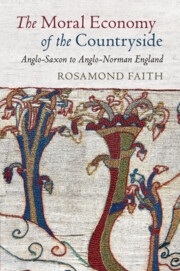Book contents
- Reviews
- The Moral Economy of the Countryside
- The Moral Economy of the Countryside
- Copyright page
- Contents
- Preface
- Abbreviations
- 1 Introduction: The Moral Economy
- Part I Rank
- Part II Reciprocity
- Part III Reputation and Witness
- 7 Neighbours and Strangers
- 8 Markets and Marketing
- Part IV The Wolf Sniffs the Wind
- Part V The Aftermath of Conquest
- Part VI In the World of the Manor
- Appendix The Family Farm in Peasant Studies
- Bibliography
- Index
8 - Markets and Marketing
from Part III - Reputation and Witness
Published online by Cambridge University Press: 25 October 2019
- Reviews
- The Moral Economy of the Countryside
- The Moral Economy of the Countryside
- Copyright page
- Contents
- Preface
- Abbreviations
- 1 Introduction: The Moral Economy
- Part I Rank
- Part II Reciprocity
- Part III Reputation and Witness
- 7 Neighbours and Strangers
- 8 Markets and Marketing
- Part IV The Wolf Sniffs the Wind
- Part V The Aftermath of Conquest
- Part VI In the World of the Manor
- Appendix The Family Farm in Peasant Studies
- Bibliography
- Index
Summary
The peasant economy depended on some purchases of essentials like querns and whetstones yet the numismatic record does not support the idea of a widely available currency of a low denomination low enough to have been used in every transaction. Cash circulated through waged work and small-scale marketing but Anglo-Saxon coins were of too high a denomination to have been used for petty sales and purchases. Thinking only in terms of an officially sanctioned currency may be a barrier to understanding early medieval attitudes to money. Real life practice may have been more flexible. All that trading partners need is a trusted medium of exchange and in the countryside marketing may have been much less regulated than the laws prescribe. Other units of value, reckoned in monetary terms, could do the work that coinage did.
- Type
- Chapter
- Information
- The Moral Economy of the CountrysideAnglo-Saxon to Anglo-Norman England, pp. 87 - 98Publisher: Cambridge University PressPrint publication year: 2019

